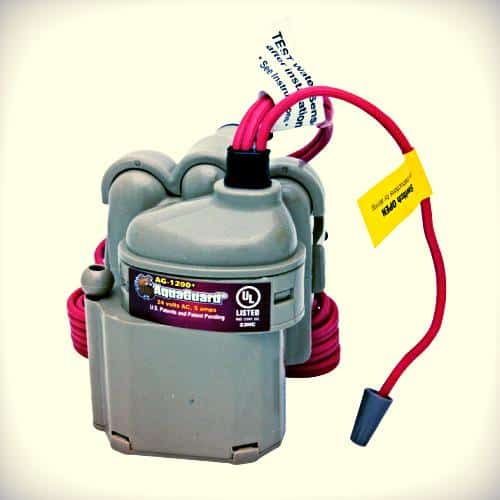Air conditioning tune-ups prevent future damage to your house and save customers money.
One of our customers is moving from Oak Forest to Spring Branch in Houston, TX. We were asked to provide them with an air conditioning tune-up to help prep the system for the next homeowner.
The home has two systems that are both three-year-old Trane XR14 (14 SEER) systems. Despite their young age, neither system had the code-required float switches, or as we like to call them, “ceiling savers.” It’s a good thing the homeowners called us for a tune-up! In this case, we were able to keep the customer from having preventable expenses from their HVAC system.

Let’s Talk Float Switches
When an AC system isn’t protected by code-required ceiling savers, the potential result is water overflowing the drain pan and filling the home with water. This is caused by a clog in the drain line. Here are some common questions about air conditioners that relate to ceiling savers:
How does an ac float switch work to stop the damage?
The float switch has a sensor that is tripped when water fills up in the drain pan of your air conditioning system. This sensor turns off power to the AC system, thus stopping the continual build-up of water from condensation. No power, no water.
Where is the drain pan for my Air Conditioner?
HVAC system drain pans are typically found in attics or closets in homes. They are placed underneath the evaporator coil.
Why does my Air Conditioning system produce water?
Much like when you park your car on a hot day and see water dripping on the ground, your AC also creates condensation. As air from your home flows through the cold coils in your evaporator, it creates condensation. This results in a more comfortable environment in Houston because your HVAC system is removing moisture from the air. Less moisture = Less humidity = More comfort.
Water produced by your AC is natural but can also create problems. In the case of your car, it’s no problem to drain water onto the ground. With your HVAC system, however, your moisture condensates in the house and must be removed. It can’t stay in the house. That’s why properly designed air conditioning systems drain moisture from condensation through your sink and/or send water to the exterior of the house. These drain lines can become clogged, causing excess water to build up.
How do air conditioning drain lines get clogged?
Typically, drain lines clog because of loose debris, dirt or attic insulation.
Just like they did for the homeowners in Oak Forest, regularly scheduled tune-ups can save you money and prevent unneeded home repairs, all while keeping your AC system working at its best.
Click here to schedule an air conditioning tune-up from Mission AC & Plumbing in Houston, TX.



